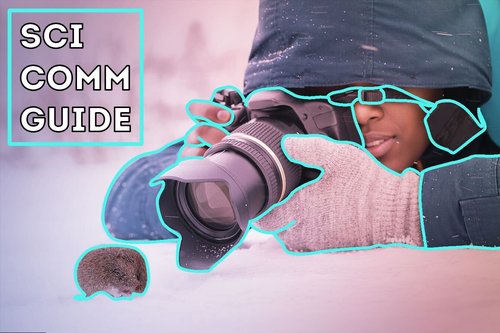
This lesson brings students into the heart of the editing process, where technical skills meet creativity to shape their science stories into something truly impactful.
Students will:
Estimated time: 30 minutes
Estimated time: 15 minutes
Estimated time: 10 minutes
Estimated time: 5 minutes
People are attracted to information that helps them make good decisions. If you like music, you find musician interviews relevant. If you’re looking for a job, the business news is relevant. We need to depend on relevant information that helps us make decisions.
In news, it’s a story’s point or theme. It's the lens through which the producer or writer filters the information they have gathered and focuses it to make it meaningful to viewers or readers.
The people who read, watch and consume news. Often, journalists think about audience and newsworthiness in similar ways. How will the news story serve their local or national audience? Who am I writing the story for and why?
An account of past or current events. In journalism, stories are presented with a combination of people, facts, and typically includes a beginning, middle and end.
A person or other physical being in a narrative. Stories are made up of different characters who provide information and help shape the narrative with their knowledge, experience and perspective.
The process of changing and updating your work based on feedback with the goal of making it stronger. To successfully revise your story, listen to other perspectives, be open to reconsidering parts of your story and remember not to take feedback personally - it's about the story, not about you.
A document with transcribed (written-out) soundbites and voiceover narration. A VIDEO script is a two-column document with the audio (soundbites and voice over) in the right-hand column and a description of what the audience sees (visuals) in the left-hand column.
When violence strikes or when people argue about actions, events, ideas or policies, we care. Conflict and controversy attract our attention by highlighting problems or differences within the community or between groups. Sometimes conflict can be subtle and manifest as tension.
Narration and/or voiceover (VO) with a host, commentary, research, personal experiences, explanations, infographics, nats (natural sound), music, entertainment.
A sequence is a series of shots of an action or scene. A classic action sequence consists of a combination of at least three shots of an action in sequential order.
The primary video and audio that drives your story from beginning to end.
A selection of separate sections of video that form a continuous, edited piece.
The availability of facts or information indicating whether a belief or proposition is true or valid
Something that is known or proved to be true.
An investigation into and study of sources in order to establish facts and reach new conclusions.
A source is an individual, company, document or more that can provide information to fuel a new story. In order for a story to be considered verified and to maintain a reputation as a news outlet, it is important to have a credible source.
A detailed analysis and assessment of something.
An example of using a little person to tell a big story. For example, you want to tell a story about pollution in your community’s water system. That is a big issue. Your video will use the story of a person (character) to illustrate the effects of bad water quality.
After someone reviews your work, it is good practice to receive feedback, or an evaluation of your work based on certain standards. Feedback from multiple perspectives is an important part of the process. Masterpieces are rarely created in isolation.
The process of verifying the accuracy of a piece of information.
The supplemental footage used to visually support your A-ROLL.
Search: broll.
Students critically curate a variety of resources using digital tools to construct knowledge, produce creative artifacts and make meaningful learning experiences for themselves and others. (ISTE)
Students communicate clearly and express themselves creatively for a variety of purposes using the platforms, tools, styles, formats and digital media appropriate to their goals. (ISTE)
Video Production
Media Literacy
Science
Education
STEM
Beginner
Intermediate
Mic
Post It Notes
White board, chalkboard or other visual board
Markers
Slides
Projector
Computers
Camera or Mobile Phone
Mobile Phone
Internet
Padlet, Jamboard or other app for group collaboration
1 Week